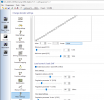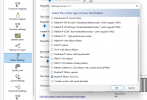Hoi Bruno,
Ik kan helaas het filmpje niet openen, maar goed dat het uiteindelijk in orde is gekomen met je Mallet!
De Mallet was een van m'n eerste ombouwprojecten jaren geleden. Ik heb ook het BR98 soundproject van ESU gebruikt. De functies zijn beperkt, maar je kunt via de Lokprogrammer naar hartelust functies en geluiden toevoegen, zo heb ik een automatische koppelhaak en ketelvuur toegevoegd, samen met een aantal geluidsfuncties.
Mocht je de Lokprogrammer en al zijn functies helemaal willen verkennen, deze tutorial van me legt je alles uit. Het is een lange opname maar dat komt door het vragenuurtje dat eraan hangt. Je kunt via de hoofdstukken ook snel naar een onderdeel wat je nodig hebt skippen. Veel succes! Bij vragen, laat het gerust weten. Ook altijd welkom in Lokeren!
For those of you who are interested, I also made a video about magnet activated sounds, so that you get the magnet activation behaviour just like the older LGB locomotives, but with the ESU decoders. You can find it below!




